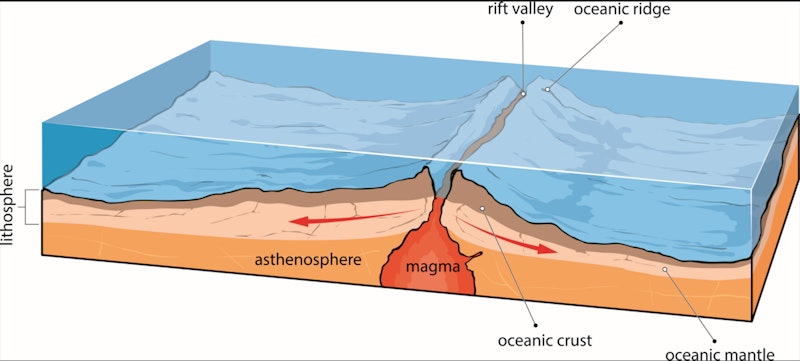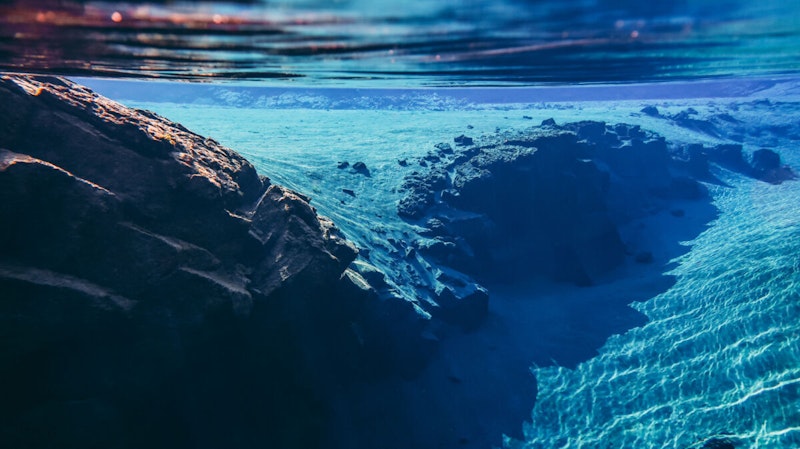Study Notes
GCSE Geography | Constructive Plate Margins (Tectonic Hazards 6)
- Level:
- GCSE
- Board:
- AQA, Edexcel, OCR, Eduqas
Last updated 17 Oct 2024
At constructive plate margins tectonic plates move away from each other - usually at around 2cm a year. They are also known as divergent margins.
At constructive margins tectonic plates move apart due to slab pull, ridge push or a combination of the two. Constructive margins often have very young rock because new crust is formed when magma (caused by the upper mantle melting) rises to the surface and fills the gap created by the plates moving apart. This magma then cools and solidifies to form new lithosphere. The new material sometimes fractures as it moves which causes shallow, but small earthquakes.
Most of the magma stays below the surface however it can push up the crust at constructive margins, which leads to ridges and rifts forming. In some places the magma will erupt onto the surface. Here the lava is runny and will spread out over quite a distance before solidifying. Over time this will form a shield volcano with a wide base and gentle slopes.

There are two types of divergence:
- Continental - where stretching and collapsing of lithosphere causes the land between faults to collapse, which creates deep and wide rift valleys, eg. East African Rift that runs through Ethiopia, Kenya, Congo DR, Uganda, Rwanda, Burundi, Zambia, Tanzania, Malawi and Mozambique.
- Oceanic - sea floor spreading on either side of a mid ocean ridge, eg. Mid-Atlantic Ridge.
Mid-ocean ridges
Tectonic plates moving apart have formed thousands of kilometres of mountain ridges below the sea. These are broken up by transform faults (at right angles to the plate margins). When the faults widen it can lead to friction and stress building up, resulting in shallow focus earthquakes.
Mid-ocean ridges can rise up to 4000m above the ocean floor. At the middle of the ridge is a deep rift valley which is widened by magma rising, cooling and solidifying to form new rock. There are many submarine volcanoes along mid-ocean ridges - some of them grow to rise above sea level creating volcanic islands.

The most famous example is the Mid-Atlantic Ridge which has formed by the Eurasian and North American plates moving apart - here magma rose to the surface and over time formed the island country Iceland, which is now starting to split in two as the tectonic plates continue to move, causing more cracks and faults to form. You can actually see the plate margin at the Almannagjá fault. As a result of its location Iceland experiences frequent earthquakes and volcanic eruptions.
You might also like
Indonesian earthquake's death toll expected to rise significantly
30th September 2018